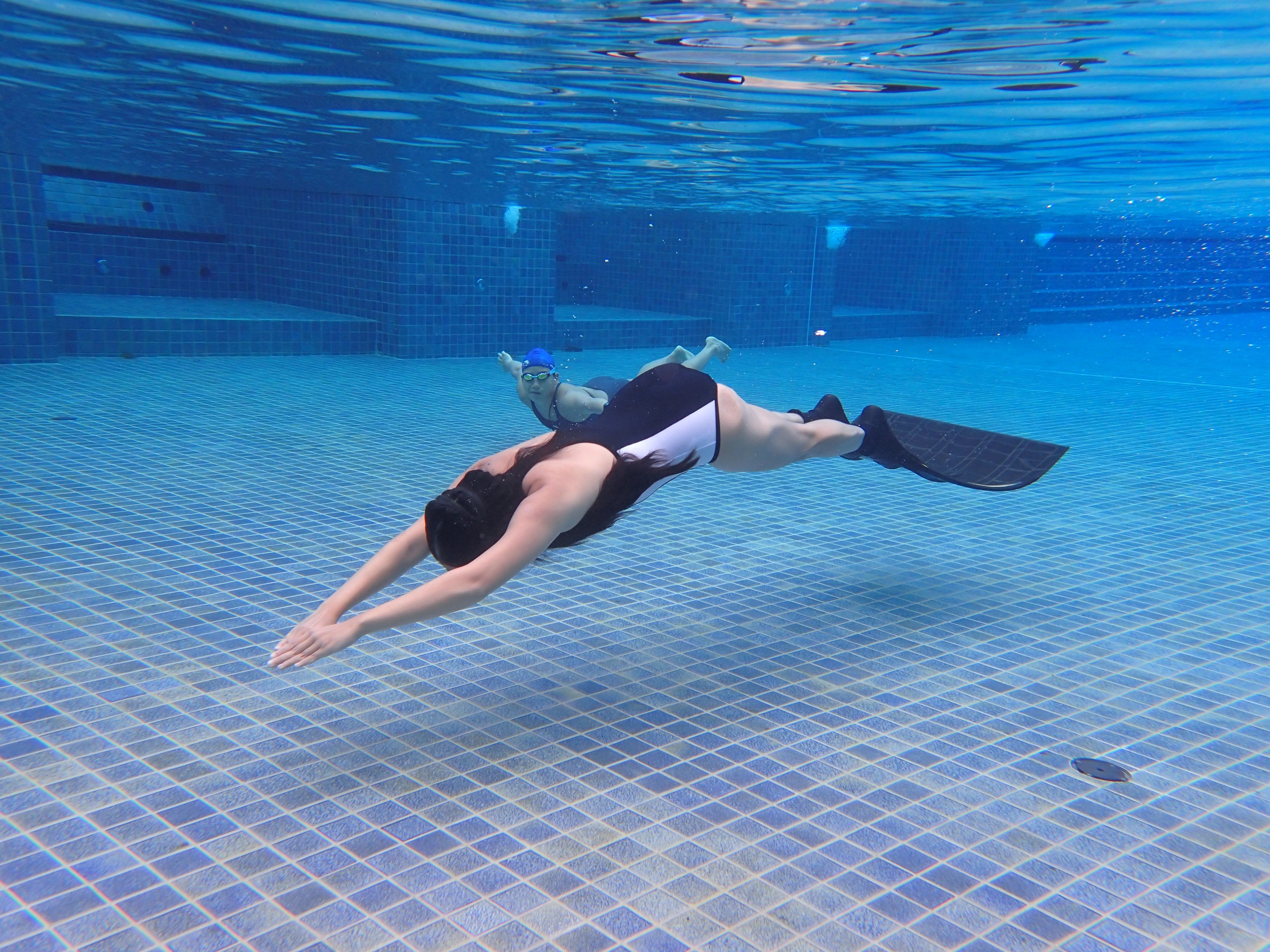
An Introduction to the Monofin (by Cong)

Here's one of our Zenners, Kohei, looking great with a monofin at his side, at the Pan Pacific Championship 2018 in Tokyo, Japan.
As I start my DYN dive in the pool, I try to relax and disengage the gears of my conscious mind with almost everything outside of the present: the resistance of water ahead, the flow of water on outstretched arms, the snugness of the monofin’s foot socket. With one kick, a movement that originates from the hips passes down the body through to the fibreglass of the monofin, and a surge of force propels me forward. A dozen kicks later and I’m at the other end of the pool.
For those familiar with monofins, these large blades provide unparalled efficiency in freediving. Every DYN record for pool or depth disciplines has been set with a monofin. The dolphin kick is used for the monofin: keep your knees together, and kick from the hips. The force generated is considerably greater than that from the flutter kick used with bifins, and requires less overall movement. This means that for the same amount of effort, a freediver can swim considerably further with a monofin.
But it’s not just about the distance. Just as freediving is an intensely personal experience, the different styles of kicking with a monofin can complement your own style of freediving. Do you stretch out the glide after every big kick, maximizing the distance covered per pulse of your hips? Or does a double kick followed by a long glide feel more efficient? This can reduce the dive time, but requires more movement. Or do you prefer to relax as much as you can, and cycle through a slow, relaxed and continuous kick throughout the whole dive? Depending on your personal preference, and the level of your technique, you might come to favour different styles of kicking at different times in your journey as a freediver. Finding your balance, and explore how they complement your style of freediving and what works best for you, is a delightful part of doing DYN dives.
The feeling of using a monofin for the first time is quite simply exhilarating. The first sensation is that realizing you’re going somewhat faster than you expected. At first, this can be challenging to control; swimming with bifins makes for a considerably more stable dive. It takes practice to point all that power in the right direction! But as your technique improves, doing the dolphin kick takes less and less effort; in the open water, positive buoyancy is rapidly overcome with a good duck dive and a few strong kicks. In the pool, a lot of practice is needed with turns so as to swing that big monofin around efficiently – but eventually you’ll be eyeing to make a second turn and hitting ever greater distances. Freediving allowed me entry into a very special world, but to traverse the it with what feels like a small engine has been incredibly satisfying.


